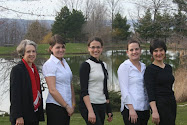






 Hot fish juice with lemon and herbs. Seems to be everywhere on the coast.
Hot fish juice with lemon and herbs. Seems to be everywhere on the coast..jpg) Yes, you read that right. Cheers!
Yes, you read that right. Cheers! Lùcuma ice cream. Everywhere.
Lùcuma ice cream. Everywhere..jpg) Corn, lima beans, peas, onions, and farmers' cheese salad. Huaraz.
Corn, lima beans, peas, onions, and farmers' cheese salad. Huaraz..jpg) Potatoes. Everywhere, especially Huaraz.
Potatoes. Everywhere, especially Huaraz..jpg) Kiwicha, a grain related to quinoa that looks like millet. Huaraz.
Kiwicha, a grain related to quinoa that looks like millet. Huaraz..jpg)
 Seafood/ Pescado y Mariscos
Seafood/ Pescado y Mariscos Cebiche/ ceviche. Raw fish "cooked" by marination in lime juice. Found everywhere on the coast.
Cebiche/ ceviche. Raw fish "cooked" by marination in lime juice. Found everywhere on the coast. .jpg) Various seafood... mariscos. This is battered and fried squid, octopus, and other seafoods. Found on the coast.
Various seafood... mariscos. This is battered and fried squid, octopus, and other seafoods. Found on the coast..jpg) More seafood. Clams with red onions in their shells. Coast (Piura).
More seafood. Clams with red onions in their shells. Coast (Piura)..jpg) Mango ciruelo. A cross between a mango and an apple. Piura.
Mango ciruelo. A cross between a mango and an apple. Piura..jpg) Coconut! Piura.
Coconut! Piura..jpg) Again, I'm blanking on the name of this fruit. This was from Huaraz.
Again, I'm blanking on the name of this fruit. This was from Huaraz.

More so in Piura than elsewhere, there are a lot of palm trees. This picture is from Sullana, near Piura, I think. 
 The acacia tree has palm-like fronds and very large seed pods. During the summer, it blooms with brilliant red flowers. This picture is from Piura.
The acacia tree has palm-like fronds and very large seed pods. During the summer, it blooms with brilliant red flowers. This picture is from Piura. The floripondio tree is small, distinguished by large, white, trumpet-shaped flowers that hang downward. This picture is from Trujillo.
The floripondio tree is small, distinguished by large, white, trumpet-shaped flowers that hang downward. This picture is from Trujillo. This isn't a tree, but I'll include it anyway. Sugar cane is an important crop here. We visited a sugar cane processing plant outside of Trujillo (I think... the days are starting to blur together!).
This isn't a tree, but I'll include it anyway. Sugar cane is an important crop here. We visited a sugar cane processing plant outside of Trujillo (I think... the days are starting to blur together!). There are cactuses in the sierra (the mountainous region, such as near Huaraz), as well as the desert areas near the coast (such as Trujillo and Piura). Here is a typical cactus. I took this picture in Huaraz.
There are cactuses in the sierra (the mountainous region, such as near Huaraz), as well as the desert areas near the coast (such as Trujillo and Piura). Here is a typical cactus. I took this picture in Huaraz. This succulent is known as tuna in Peruvian spanish. I believe that this is prickly pear, correct? Apparently, there is a little critter, which I think is the carmine beetle, that lives on this cactus and is used to made pigments, such as for lipstick. This picture is from Huaraz.
This succulent is known as tuna in Peruvian spanish. I believe that this is prickly pear, correct? Apparently, there is a little critter, which I think is the carmine beetle, that lives on this cactus and is used to made pigments, such as for lipstick. This picture is from Huaraz.